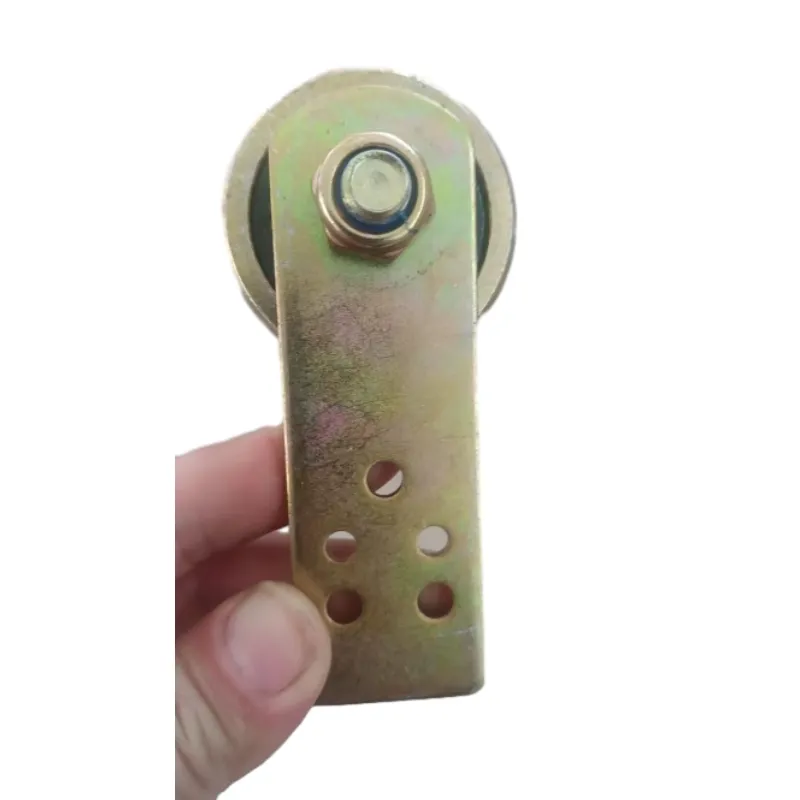
Dec . 04, 2024 15:55 Back to list
Understanding Angular Bearings and Their Applications in Navigation and Engineering
What is Angular Bearing?
Angular bearings are a crucial component in various mechanical systems, designed to support loads while enabling rotational movement. Unlike standard radial bearings, which support loads perpendicularly to the shaft, angular bearings are engineered to accommodate both radial and axial loads simultaneously. This unique capability makes them essential in applications that require precise positioning and alignment.
Design and Structure
Angular bearings typically feature a single row of rolling elements, such as balls or rollers, positioned between an inner and outer race. The races are tapered, which allows for the transmission of forces from multiple directions. The contact angle, which is the angle between the line of action of the load and the line perpendicular to the axis of the bearing, is a defining parameter in angular contact bearings. Common contact angles are 15°, 25°, and 40°, and the choice of angle impacts the bearing's load capacity and stiffness.
The design of angular bearings allows them to handle axial loads in one direction and some degree of radial loads. If axial loads come from both directions, a matched pair of angular bearings can be used, mounted back-to-back (DB) or face-to-face (DF), to handle the loads efficiently.
Types of Angular Bearings
Angular bearings are categorized into several types based on their structure and load-handling capabilities. The most common types include
1. Single-Row Angular Contact Bearings These are the simplest form and can only support axial loads in one direction. They are often used in pairs to support loads from both directions. 2. Double-Row Angular Contact Bearings These bearings are designed to handle axial loads in both directions and have a higher load capacity than single-row designs. They are ideal for applications requiring robustness and reliability. 3. Four-Point Contact Bearings As the name suggests, these bearings have four contact points per ball, allowing them to support axial loads in both directions and withstand higher loads. 4. Thrust Angular Bearings These are specifically designed to handle high axial loads and are often used in applications like turntables or heavy machinery.
what is angular bearing

Applications of Angular Bearings
Angular bearings are widely used across various industries due to their versatility and reliability. Some common applications include
- Machinery and Equipment Angular bearings are prevalent in industrial machinery, where precision and load handling are paramount. They provide stability in rotating parts, ensuring smooth operation. - Automotive Applications In vehicles, angular bearings are often used in gearbox assemblies and wheel hubs, where they help manage both radial and axial loads under dynamic conditions. - Aerospace The aerospace industry relies heavily on angular bearings for controlling flight mechanisms and supporting the intricate motion of various aircraft components. - Robotics and Automation In robotic systems, precision is essential. Angular bearings facilitate smooth movements and allow robots to perform tasks with accuracy.
Advantages of Angular Bearings
The primary advantages of angular bearings include
- High Load Capacity Their design enables them to handle both axial and radial loads effectively, making them suitable for high-load applications. - Space Efficiency Angular bearings can be compact, allowing for smaller machinery designs without compromising on performance. - Versatility With various designs available, angular bearings can be tailored for specific applications, making them a flexible choice for engineers.
Conclusion
In summary, angular bearings play a vital role in supporting and facilitating rotational movement in numerous applications. Their ability to handle both axial and radial loads effectively makes them indispensable in modern machinery and equipment. By understanding the various types of angular bearings and their specific applications, engineers and designers can select the right bearing solution for their projects, thereby enhancing performance and reliability. Whether in automotive, aerospace, or industrial machinery, angular bearings are integral to the success of engineering designs.
Latest news
-
Grooved Ball Bearing Design and Functionality
NewsJun.04,2025
-
Concrete Mixer Bearing Load Capacity Testing
NewsJun.04,2025
-
6004 Bearing Dimensions in Robotic Joint Designs
NewsJun.04,2025
-
Advantages of Single-Row Deep Groove Ball Bearings
NewsJun.04,2025
-
Applications of Deep Groove Ball Bearings in Automotive Systems
NewsJun.04,2025
-
Innovations in Bearing Pressing Machine Design
NewsJun.04,2025
